Brief History of Rivne Oblast
The territory of the present Rivne region is part of the lands of such a historic region as Volhynia. Archaeological finds on this territory show that this land was inhabited since the late Paleolithic, about 40-10 thousand years ago. In total, more than 100 remains of ancient settlements and burial grounds were found here.
In the 6th-7th centuries, associations of tribes of the Dulebs lived in Volhynia. At the beginning of the 10th century, this region formed close ties with Kyiv. In the same century, it became part of the Vladimir Principality of Kievan Rus. The town of Rivne was first mentioned in written sources in 1283, when the battle of Polish and Lithuanian troops took place here. After 1340, the territory of the region became part of the Grand Duchy of Lithuania.
After the Union of Lublin of 1569, this land passed into the possession of Poland. The local population was actively involved in the Nalyvaiko Uprising of 1594-1596 and the Khmelnytsky Uprising (the Cossack-Polish War) of 1648-1654.
In 1793, after the second partition of Poland, eastern Volhynia, and after the third partition in 1795, western Volhynia, including Rivne, became part of the Russian Empire. In 1796, the Volhynian Governorate was formed on this territory. In 1857, the Kyiv-Brest road passed through the territory of the region. In 1873, the railway between these cities passed through it. During the First World War, it was a frontline region for several years.
More historical facts…
During the Civil War in the territory of the former Russian Empire, power in this region changed several times. In 1920, it was occupied by Polish troops. In 1921, under the Treaty of Riga, western Volhynia, including the present Rivne region, became part of Poland. It was part of the Volhynia Voivodeship of Poland until 1939.
In September 1939, according to the Molotov-Ribbentrop Pact between the USSR and Germany, these lands passed under the control of the USSR. In December 1939, a separate Rivne Oblast was formed as part of the Ukrainian Soviet Socialist Republic.
In 1941, during the German invasion of the USSR, Rivne turned into a kind of “capital” of the occupied Ukrainian lands. Since September 1941, the “Reichskomiariat of Ukraine” and the residence of the gauleiter were located here.
The revival of Ukrainian public and underground organizations began. This region became one of the centers of the Ukrainian national liberation movement. In February 1944, the USSR regained control of Rivne Oblast. By the mid-1950s, the Ukrainian liberation movement was almost completely suppressed.
By 1950, the restoration of the war-torn economy was completed. In the 1960s-1980s, several new large enterprises were put into operation, for example, the Rivne Flax Mill and the Rivne Mineral Fertilizers Plant - the leader in the production of nitrogen fertilizers in Western Ukraine. In the late 1980s, due to the weakening of the Soviet regime during perestroika, the national liberation movement revived in the Rivne region.
In 1991, Rivne Oblast became part of independent Ukraine. During the years of independence of Ukraine, historical and ethnographic traditions began to revive in the region, a number of churches, monasteries, and old castles were restored.
Landscapes of Rivne Oblast
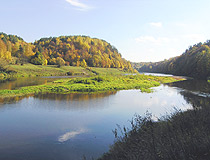
Small river in the Rivne region
Author: Yuriy Rybnyk
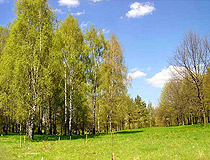
Summer in Rivne Oblast
Author: Alexander Kalach
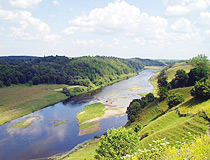
Nature of the Rivne region
Author: Ruslan Demchuk
Rivne Oblast - Features
Rivne Oblast has a favorable geographic location with significant transit potential. In the north of the region, there is the state border of Ukraine with Belarus with a length of 234 kilometers. There are five international checkpoints. The Rivne region stretches 210 km from north to south and 130 km from west to east.
On the territory of the Rivne region, the most common natural resource is peat (the largest deposits in Ukraine). There are also significant reserves of building materials: granites (light pink and gray), granodiorites, kaolins, wood, clay, chalk, sandstones, as well as reserves of basalt and amber.
The climate is temperate continental with humid warm summers and mild winters. The average temperature in July is about plus 18.6 degrees Celsius, in July - minus 4.8 degrees Celsius.
Rivne Oblast is located at the intersection of international transport highways (E373, E40, E85), close to the border with the European Union (100 km), and Kyiv, the capital of Ukraine (250 km). The region is crossed by the Kyiv-Warsaw, Kyiv-Brest, Kyiv-Lviv, Lviv-Zhytomyr, Kyiv-Chernivtsi highways.
Industry and agriculture occupy the leading place in the local economy. The leading industries are production and supply of electricity, chemical industry, production of building materials and glass products, food industry, manufacturing of wood products, engineering, furniture manufacture, textile and mining industries.
The main directions of agricultural development are the cultivation of grain and leguminous crops, industrial crops (sugar beets, sunflower), potatoes, vegetables, and livestock production (meat, milk, eggs).
In total, there are 2,380 cultural heritage sites in the Rivne region, of which 1,100 are archeological monuments (17 of national importance), 336 architectural monuments (95 of national importance), 864 historical monuments, 80 monuments of monumental art. There are 8 old castles, which are architectural monuments of national importance.
The list of historical settlements of Ukraine includes 13 towns and villages of Rivne Oblast: Berezne, Volodymyrets, Hoshcha, Dubno, Dubrovytsya, Klevan, Korets, Mizoch, Mlyniv, Ostroh, Radyvyliv, Rivne, Stepan.
Main Attractions of the Rivne Region
The Tunnel of Love in Klevan. A few kilometers east of the village of Klevan, about 23 km northwest of Rivne, you can find an old 4 kilometers long railway track going to a woodworking plant. In the past, military bases were located in nearby villages and the railway was masked with trees planted along it. The trees were constantly cut from two sides, so they densely grew upwards.
After some time, the trees formed a kind of green grotto or a tunnel. This is the only such place in Ukraine. Newlyweds often arrange photo shoots on their wedding day here - hence the name. The best time to visit is summer and autumn.
The Dubno Castle in the town of Dubno, about 47 km southwest of Rivne. The ancestral castle of the Ostrogski family was built in the 15th century, then belonged to several other aristocratic families. In this complex of buildings, which is a historical and architectural monument, there are several exhibition halls: a hall with Ukrainian embroidered shirts, a numismatics hall, a picture gallery, a hunting hall, a hall with curved mirrors, a torture chamber, a courtroom, an exhibition of miniatures.
There is also a souvenir shop and a cafeteria here. It takes about an hour to walk from the railway station of Dubno to the castle. The town has a number of other interesting architectural monuments, mostly old churches. Another attraction of Dubno is the Park of Wooden Sculptures with figures of famous Ukrainians and residents of the town, fairy-tale heroes, and historical figures.
The Source of St. Anne in Onyshkivtsi, about 100 km southwest of Rivne. This holy spring located on the territory of St. Nicholas Convent is one of the pilgrimage centers of Orthodox believers in Volhynia. Above the source there is the chapel of St. Anne. The water temperature throughout the year is 4-5 degrees Celsius. Those who want to be healed of diseases can plunge into the water in a special outdoor pool.
The Ostroh Castle in Ostroh - the former residence of the Ostrogski family, who owned vast lands in Volhynia in the 14th-17th centuries. This is the most famous landmark of the town of Ostroh located about 47 km southeast of Rivne. Today, the castle houses a museum of local history - the oldest museum in the Rivne region. This building is a unique residential castle with only one tower.
The National University “Ostroh Academy” in Ostroh. Founded as a monastery in 1576, the Ostroh Slavic-Greek-Latin Academy became one of the first educational institutions in Eastern Europe. The building that houses the university was constructed in the 18th century. There is a museum of the academy (7 halls). Guided tours to the dungeons of the monastery are available.
The Field of the Battle of Berestechko in Plyasheva, about 90 km west of Rivne. Founded in 1912, this is a national historical and memorial reserve on the site where the largest battle of the Cossack-Polish War took place in 1651. The defeat of the Cossacks was a heavy blow to the Ukrainian proto-state, more than 10,000 Cossacks and peasants were killed. The museum of the complex presents finds made by archaeologists on the battlefield.
The Tarakaniv Fort near Tarakaniv, about 51 km southwest of Rivne - one of the most interesting places in Rivne Oblast. This is a powerful fortification built on the Russian-Austrian border to protect the Lviv Railway in 1890. The fort constructed in the shape of a rhombus is a concrete and earth fortification with a quadrangular two-story barracks in the center.
It is surrounded by two rows of powerful earthen ramparts, between which a 14-meter ditch with stone walls and casemates is dug. The fort was never used for its intended purpose. Today, this abandoned and overgrown fort is a very picturesque place.
Holy Trinity Fortified Monastery (the 16th-17th century) in Mezhyrich is a monument of the Volhynia architecture school, which combines the traditions of old Russian constructive techniques with elements of Gothic-Renaissance architecture. Its layout, combination of secular, cult, and defensive features, the Renaissance decor make it an outstanding architectural monument of Ukraine. The monastery is located about 53 km southeast of Rivne, about 3 km southwest of Ostroh.
The Reserve “Basalt Columns” in Bazaltove, about 58 km north of Rivne - a unique natural monument for Ukraine. At this place, the basalt deposit is composed of geometrically regular pillars. The thickness of the pillars reaches 1.2 meters, the height - up to 30 meters. In the past, there were a lot of basalt quarries here. Some of them are still operating, other are flooded.
The Nature Preserve “Sokolyni Hory” - part of the Nadsluchanskyy Regional Landscape Park located between the villages of Hubkiv and Marynyn, about 76 km northeast of Rivne. The Sluch River flows between steep, forested rocky shores up to 25 meters high here. It is a great place for falcons to nest - hence the name literally meaning “falcon mountains”.
This area, a popular camping place, is often called “Nadsluchanskyy Switzerland” for its amazing landscapes and is considered one of the most beautiful corners of Rivne Oblast.


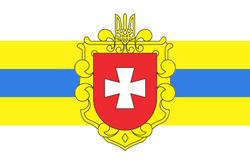
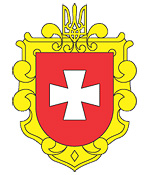



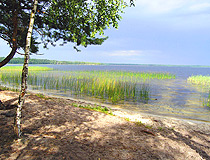
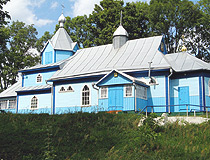
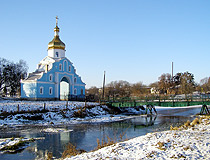
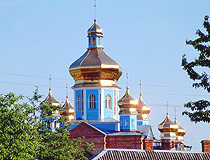
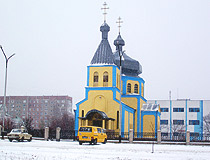
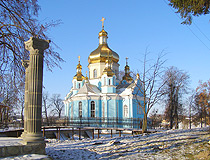
The comments of our visitors